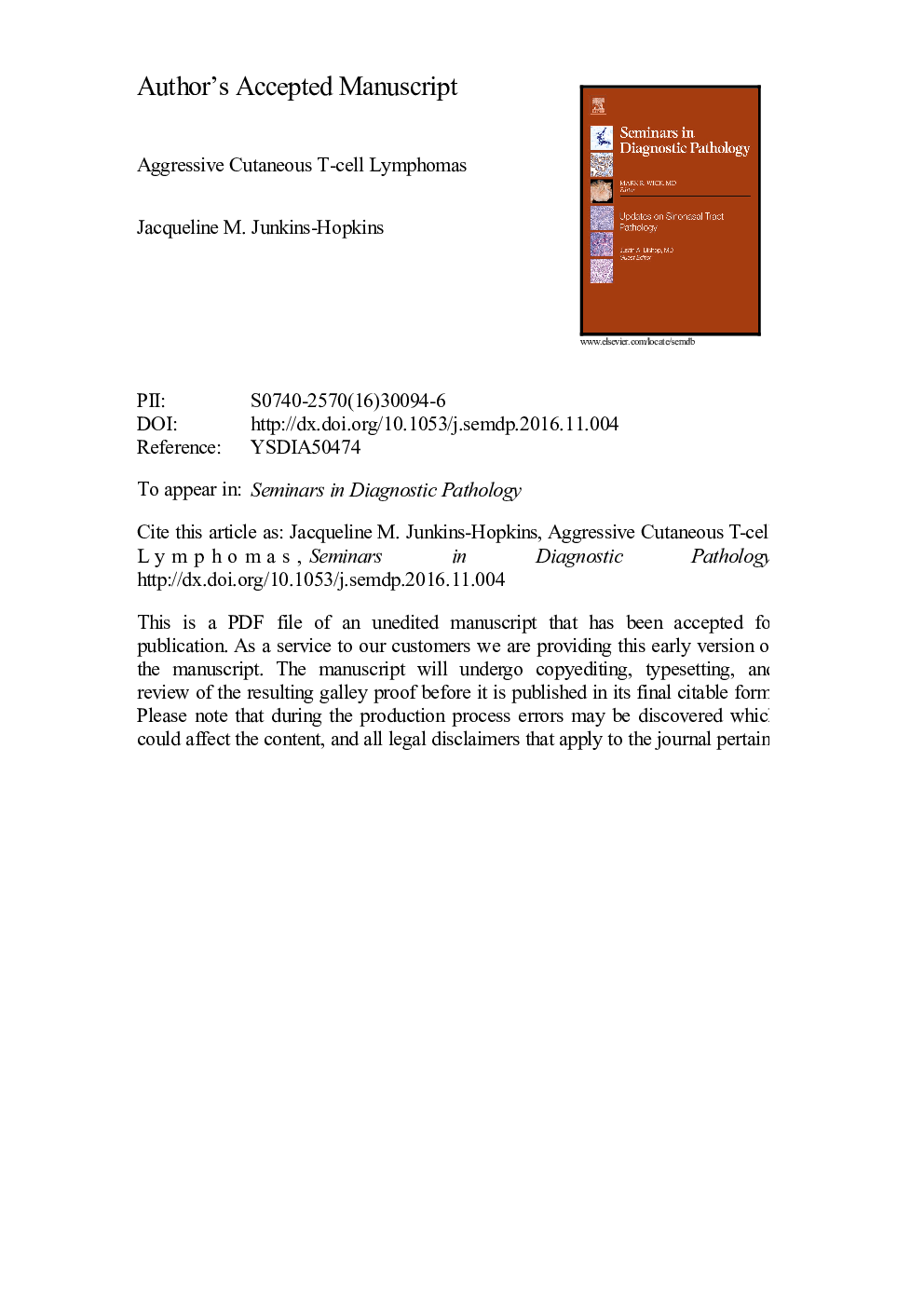| Article ID | Journal | Published Year | Pages | File Type |
|---|---|---|---|---|
| 5716732 | Seminars in Diagnostic Pathology | 2017 | 66 Pages |
Abstract
Cutaneous T cell lymphomas (CTCLs) are heterogeneous, with a prognosis determined in large part by combined clinical, histopathologic, and immunophenotypic features. They are classified under the WHO-EORTC classification of primary cutaneous lymphoma. Whether or not a patient diagnosed with CTCL will experience an aggressive course may not be completely predictable; however, certain subtypes have been proven to be associated with a poor response to therapy and/or short survival. These aggressive subtypes may be diagnosed by certain histologic, immunophenotypic, and clinical features; however, there are benign lymphoproliferative disorders (LPD), such as lymphomatoid papulosis (LyP) that present with biopsy findings that simulate an aggressive lymphoma. Moreover, some of the well-recognized aggressive lymphomas may rarely follow an indolent course, while otherwise indolent lymphomas may act aggressively. This review will focus on the non-mycosis fungoides (MF) aggressive subtypes, as well as potentially aggressive presentations of MF.
Keywords
Related Topics
Health Sciences
Medicine and Dentistry
Pathology and Medical Technology
Authors
Jacqueline M. Junkins-Hopkins, MD,
